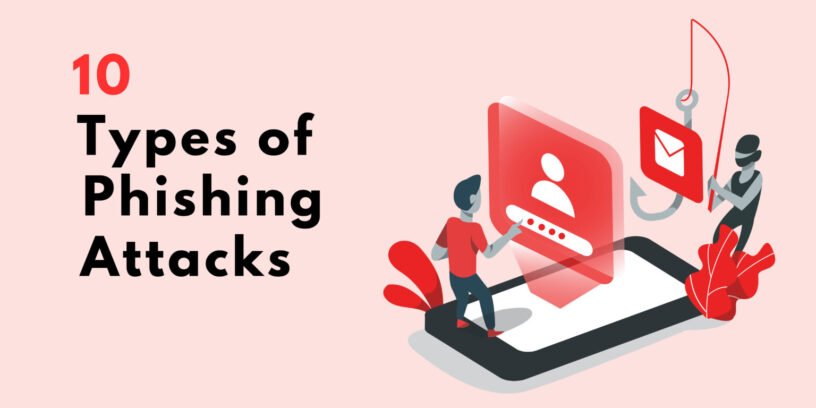Introduction:
With our lives becoming more and more integrated with the digital world, the danger of phishing attacks continues and gets more sophisticated. Cybercriminals use a range of strategies in 2024 to trick gullible people. This article examines the top ten phishing attacks that have been around this year and provides helpful advice on how to avoid falling for these nefarious schemes.
1. Email Phishing:
- What it is: Email phishing involves deceptive emails that mimic trusted entities, aiming to trick recipients into disclosing sensitive information.
- How to prevent: Always verify the sender’s identity, avoid clicking on suspicious links, and enable two-factor authentication for an additional layer of security.
2. Spear Phishing:
- What it is: Spear phishing is a targeted form of email phishing attacks, where cybercriminals tailor messages based on specific individuals’ information.
- How to prevent: Be cautious of unexpected emails, verify sender details meticulously, and exercise skepticism towards requests for sensitive information.
3. Vishing (Voice Phishing):
- What it is: Vishing employs voice communication to deceive individuals, often imitating legitimate calls from banks or service providers.
- How to prevent: Verify the caller’s identity before sharing personal information and be wary of unsolicited calls demanding urgent action.
4. Smishing (SMS Phishing):
- What it is: Smishing uses text messages to deceive individuals into clicking on malicious links or divulging personal information.
- How to prevent: Avoid clicking on links from unknown sources, and be skeptical of unexpected messages, especially those requesting sensitive data.
5. Search Engine Phishing:
- What it is: Attackers manipulate search engine results to lead users to fake websites that appear legitimate.
- How to prevent: Double-check website URLs, ensure the site is secure (look for “https://”), and rely on reputable search engines.
6. Social Media Phishing:
- What it is: Cybercriminals create fake profiles or imitate friends on social media to trick users into clicking on malicious links.
- How to prevent: Be cautious of unsolicited messages, verify account details, and adjust privacy settings to control the information visible to others.
7. Malware-Based Phishing:
- What it is: Malware-based phishing infects devices with malicious software through seemingly harmless links or attachments.
- How to prevent: Regularly update antivirus software, use firewalls, and avoid downloading files from untrusted sources.
8. Clone Phishing:
- What it is: Clone phishing involves creating identical copies of legitimate emails, replacing links or attachments with malicious versions.
- How to prevent: Carefully review emails, especially those urging urgent action, and verify the authenticity of unexpected emails.
9. Man-in-the-Middle (MitM) Attacks:
- What it is: MitM attacks intercept communication between two parties, allowing cybercriminals to eavesdrop, manipulate data, or impersonate one of the parties.
- How to prevent: Use secure, encrypted connections, be cautious when accessing public Wi-Fi, and consider using virtual private networks (VPNs).
10. Business Email Compromise (BEC):
- What it is: BEC attacks target businesses by compromising email accounts with high-level access.
- How to prevent: Implement robust email security measures, conduct regular cybersecurity training, and establish verification procedures for financial transactions.
Conclusion:
It’s critical to keep up with the most recent phishing attacks and implement preventative security measures in the dynamic digital world. You can strengthen your online defenses and confidently navigate the virtual world in 2024 by adopting these preventive strategies into your online habits.




1 Pingback